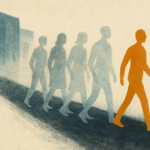Can you eat your own dog food?

Many years ago, I was frustrated by an airline’s constant lateness. A batch of clients heading for our leadership programme had again been delayed by many hours, causing big disruption to our carefully laid out schedule. This had become a regular, predictable occurrence.
The hotel manager waiting with me told me: “It’s a shame that one of the airline’s directors was not on board. They never delay those flights.” He was basing this on long observation of the pattern of lateness. An airline insider later confided that this was indeed true; staff members routinely scanned passenger lists and would pull out the stops to ensure the flights with airline bigwigs aboard were not delayed.
And so, customers were well aware of the growing problem; the airline’s bosses were behind the curve. The time bomb of customer dissent was ticking under their seats; they were blissfully unaware.
The following year, my team introduced a new segment in that leadership programme which we called “eating your own dog food.” It was focused on making the senior leaders present experience their own offerings. Over the years as an advisor, I have made many CEOs eat their own “dog food”: sit at their own switchboards to answer calls; serve their own staff; let me call their contact centres in their presence to check how well the average customer is being served; spend time on the factory floor, and even cold nights with their security guards.
I was delighted to see this approach reflected in a recent book, The Ministry of Common Sense, by Martin Lindstrom. The author recounts many examples of people failing to eat their own dog food. In one instance, he worked with the executives of a major credit-card company to understand why customer care was so bad. Their customers were clearly angry, vocally so; but senior executives were blissfully unaware of why this might be the case.
Mr Lindstrom secretly arranged for the senior executives to have their own cards blocked for 24 hours, and took them all out for a meal. When one of the bosses tried to pay for anything, he was subjected to the same problems the average customer would encounter. Payment declined. Calls not going through. All customer reps busy. Multiple reroutings. No resolution. Mounting embarrassment. Rage.
When it was finally revealed that the situation was a set-up, enlightenment dawned. The book concludes: “The only way he could possibly understand the pain his own customers went through was by experiencing that pain himself. Ten years of field reports, pages of endless statistics, and focus groups had had no effect on him. Finally, he was able to empathize with the people who used his product and service.“
Back to my hotel manager. He was able to see the airline’s problem, but not his own. When I pointed out that his own company’s senior honchos also seemed to experience something different from the norm – the best, most spacious rooms, waiters flocking around their tables, the head chef paying special attention – he looked sheepish.
It’s a common phenomenon. Senior people detach themselves from the daily experiences of their staff and customers, and inhabit a fake world where most things go well. When they do eventually come across bad news, it is as impersonal statistics on reports rather than personal emotions. They analyze; they don’t feel.
Customer and employee experiences are feelings, not spreadsheets. You will never understand those feelings if you don’t undertake the same journeys yourself. If your organization’s norm is to protect senior decision-makers from the worst that the company offers, then trouble is brewing, and it will eventually blow the roof off.
What should you do? As a leader, never isolate yourself from the experiences and journeys of your employees and customers. Find ways to encounter what they encounter. If you are a bank executive, keep visiting your branches and using your mobile app to see where the pain-points are. If you are a manufacturer, never assume all is well on the factory floor and in the distribution chain (trust me – it’s not). Whatever your dog food is, consume it and compare it to the best in the market.
Find creative ways to disguise your identity and experience the truth. It will usually shock you – but the shock will lead to enlightenment. Ask your customers how they feel, regularly and systematically. Never live so far away from the action that you no longer hear the sights and sounds of the real world.
Whatever you make, sell, or offer as a producer: buy it, use it, and experience it as a customer. Eat your own dog food. Take your own medicine. Suffer now, thank me later.
(Sunday Nation, 27 June 2021)

Buy Sunny Bindra's new book
The X in CX
here »
Popular Posts
- You are who you hang out withSeptember 28, 2025
- Why your mother was right about your anxietyOctober 12, 2025
- Born knowing the waySeptember 21, 2025
- The balance sheet that mattersOctober 5, 2025
- The art of the CX rescueSeptember 14, 2025















